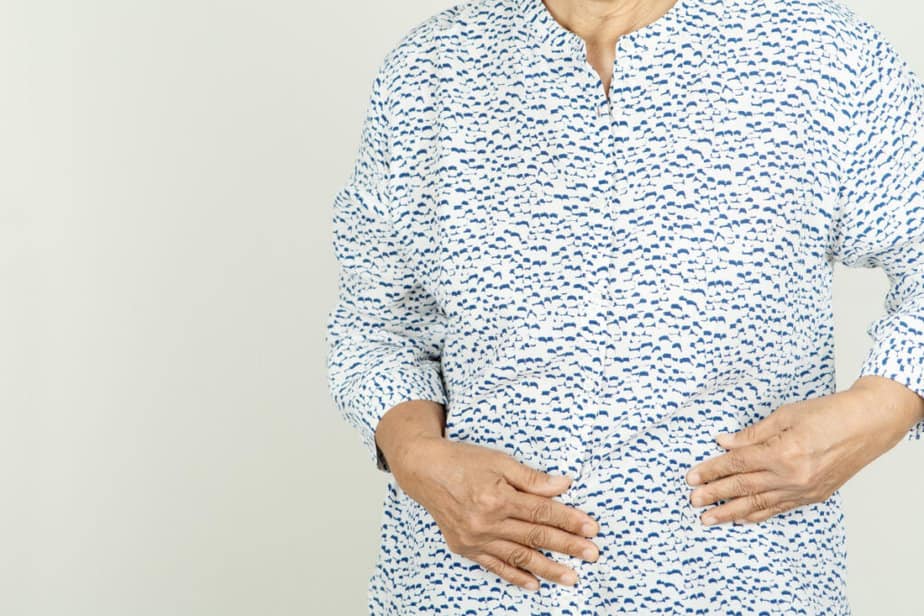Gallstones are small stones that form inside the gallbladder. They usually occur after age 40, especially among women who drink alcohol.
Gallstones are painful and can cause severe abdominal pain. In fact, gallstones are responsible for almost half of all cases of acute pancreatitis.
In this article, we’ll discuss the signs and symptoms of gallstones, treatment options, how to prevent gallstones from forming in the first place.
- Related article: Guide to the Liver
What are Gallstones?
Formed in the gallbladder or its ducts, gallstones are lumps of solid material known as cholesterol or pigment stones. Mixed stones (cholesterol and unconjugated bilirubin) account for approximately 80% of gallstone cases; these are often green, but can be white or yellow.
Pigment stones, which account for 10-20%, are small dark stones composed of calcium salts and bilirubin – these are usually black. They can be seen in patients with liver disease.
Gallstones vary considerably, from the size of a grain of sand to several centimeters in diameter. The gallbladder can develop several thousand small stones, or a single large one and everything in between.
In some cases, gallstones remain asymptomatic throughout life. About 10% of U.S. adults have gallstones, but only about 20% of these people develop symptoms. Gallstones are more common in women, with age, obesity and pregnancy.

The Cause – Why Do Gallstones Develop?
Cholesterol – as well as bile’s other components – is collected in the gallbladder when our body is fasting. Gallstones form when the chemical compounds in bile become imbalanced.
In people who develop gallstones, the cholesterol separates from its solution, forming the crystals around which gallstones develop. The presence of certain proteins in the liver and bile can work to promote or inhibit cholesterol crystallization into gallstones.
Scientists believe the cause of gallstones is multifaceted, including factors such as diet, body weight, gallbladder contractility, and genetics.
While no indisputable evidence exists linking diet to gallstones, it is believed by many researchers that diets high in starchy foods, low-fiber intake, and high-cholesterol contribute to the formation of gallstones.
It is also believed that increased levels of estrogen – brought on by birth control pills, pregnancy, or hormone replacement therapy – may elevate the levels of cholesterol in bile and decrease gallbladder contractions, providing an environment for the development of gallstones.
Hereditary blood cell disorders, cirrhosis, and biliary tract infections are risk factors for the formation of pigment stones.
Where Do Gallstones Develop?
Gallstones can form anywhere within the biliary tree, which includes the gallbladder, and common bile duct. The biliary tree has smaller branches that become microscopic within the liver.
The common bile duct is typically 1-6 mm in diameter in people who still have a gallbladder.
The gallbladder stores bile between meals, and then during a meal, the gallbladder contracts to eject bile into the small intestine.
The gallbladder is located beneath the liver on the right side of the abdominal cavity. Its function is to store the bile secreted by the liver until it is needed in the small intestine for digestion – especially important for fat digestion.
Gallstones – Signs and Symptoms
- An intense, steadily increasing pain in the upper part of the abdomen on the right side, that persists for at least about 20 minutes but can last up to several hours
- Back pain, usually between the shoulder blades
- Pain under the right shoulder
- Nausea and vomiting
- Abdominal bloating
- Intolerance to fatty foods
- Belching
- Flatulence
- Indigestion (learn more about indigestion causes)
Treatment for Gallstones
Gallbladder surgery is an effective way to eliminate gallstones. Surgical options include a standard procedure called an open cholecystectomy – major abdominal surgery with several weeks of recovery time.
A less invasive procedure, called a laparoscopic cholecystectomy, is less painful and requires substantially less recovery time. Abdominal incisions are much smaller with a laparoscopic approach.
In rare cases, surgery does not always end the pain and discomfort. Patients can develop post cholecystectomy syndrome, which involves gastrointestinal distress and persistent pain in the upper right abdomen.
Chronic diarrhea is common after gallbladder surgery due to alterations in the circulation and reabsorption of bile acids. Medications called bile acid sequestrants can help reduce this type of diarrhea. Often, this improves over time, and long term medications may not be required.
Prevention, Treatment, and Long-Term Gallbladder Health
The gradual implementation of an assortment of lifestyle changes is the best way to protect the health of your gallbladder, as well as ensure that your entire digestive system is operating at peak capacity.
- Avoid overeating
- Avoid refined carbohydrates, including sugar and white flour
- Avoid saturated and trans fats
- Drink half your body weight in ounces of water each day (6 cups)
- Eat diet high in fiber and low in fat, including lots of vegetables
- Exercise for 30 minutes each day, especially aerobic exercise
- Probiotics (What are Probiotics For?)
- Reduce meat and dairy – lean meat only, and free-range, organic, and hormone-free products
- Reduce the load on your liver by eliminating processed foods, toxic personal care products (including those with phthalates such as coal tar hair dye, alpha hydroxy acids, and fragrance)
- Shed excess weight
Can Gallstones Cause Other Problems?
Gallstones typically form and remain in the gallbladder. Every once in a while, gallstones can lodge in the cystic duct, the channel that allows bile to enter and leave the gallbladder.
The gallbladder may become inflamed, a condition known as cholecystitis, which can cause severe pain, nausea, vomiting and even fevers and chills.
Gallstones can also block the flow of digestive fluids from the bile duct if stuck in the common bile duct (a condition called choledocholithiasis) which can also cause infection (cholangitis).
If they travel all the way down the bile duct but get stuck right where it enters the intestine, the pancreas duct can become blocked off, leading to inflammation of the pancreas or pancreatitis.
In some cases, pancreatitis can be severe, even life threatening.
Learn more about other liver-related conditions and diseases:

